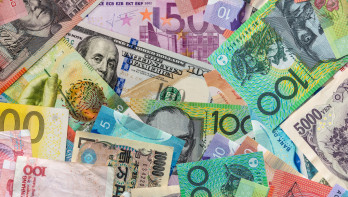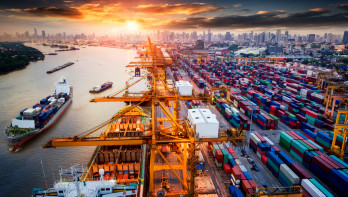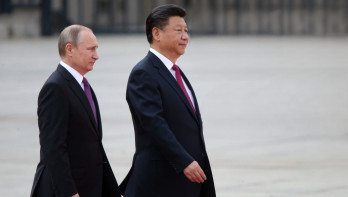Opinion Han de Jong
Signals in the economy not cause for celebration
As the summer progresses, the picture becomes clearer. With a few exceptions, the economic indicators point to a weakening. The preliminary European purchasing managers' indices for July that were released this week are heading in the wrong direction. The composite index for the eurozone, which combines the industry and the service sector, dropped from 50.9 in June to 50.1. It was the second consecutive decline. Unfortunately, after five months of steady increase, the index is now going down. While we were already aware of the pressure on the industry, now the confidence within the service sector is also weakening: 51.9 in July, down from 52.8 in June.
In short:
- European purchasing managers' indices disappoint in July
- World trade growth is picking up slightly…
- …but the situation in Europe is unfavorable
- US GDP grows faster than expected in the second quarter
In Germany, the purchasing managers' index for the industry dropped from an already low 43.5 in June to a concerning 42.6. Only in severe recessions are lower levels reached. The alternative measure for German business confidence, the Ifo index, declined for the third consecutive month in July. Particularly, the expectations component, which economists attach above-average importance to, saw a significant drop: from 88.8 in June to 86.9 in July.

In the US, the purchasing managers' indices are higher, although the index for the industry also decreased: 49.5 in July compared to 51.6 in June. Interestingly, industrial purchasing managers in the UK became more optimistic: from 50.9 in June to 51.8 in July.
Unfavorable Comparison for the Eurozone
The world trade monitor of the CPB shows a worrying picture, especially for Europe. Up to May, global trade growth has slightly improved, albeit not spectacularly, but this does not apply to the volume of foreign trade of the eurozone. These figures are quite volatile and are regularly revised significantly, so some caution is advised in interpreting them. In May, the volume of world trade was more or less unchanged compared to a year earlier, which was slightly better than in the previous months. Behind the total figure, there are significant regional differences. The US achieved a respectable +3% year-on-year, as did China. However, the eurozone is at -5% and the UK even at -9%. On the other hand, emerging Asia, excluding China, is on an upward trend: +8%.

These Asian economies are 'early-cyclical', so maybe we can draw some hope from there. However, it was a bit disappointing that export orders received by Taiwanese companies in June fell well below expectations.

I'm not sure what's exactly happening with the Dutch consumer, but they are not getting happier. Starting from a historical low point in October 2022, when high inflation scared everyone, consumer confidence gradually improved. Around the middle of last year, this improvement hesitated for a few months, but the upward trend resumed after August last year. Well, until April that is. Because for May, June, and July, CBS reports a deterioration, albeit slight. The situation is less negative elsewhere in Europe, even in Germany.
Positive Note
Let me end with a bright spot. According to preliminary figures, the US economy grew faster than expected in the second quarter. Compared to the previous quarter, the growth was 0.7%, or, as reported by US statisticians, 2.8% annualized. (We would be happy with such growth in a whole year…) In the first quarter, the growth was 0.4% (or 1.4% annualized). The increase in GDP in the second quarter was broad-based. Private consumption contributed 1.6 percentage points to the mentioned annualized 2.8%, fixed asset investments contributed 0.6%, and government consumption contributed 0.5 percentage points (of which 0.2 for defense). Companies accelerated inventory buildup, leading to a GDP growth contribution of 0.8 percentage points. On the other hand, foreign trade made a negative contribution of 0.7 percentage points. But in reality, this is more a sign of strength than weakness. Imports grew significantly faster than exports.
I can't resist. The situation in the US is better than ours, but there are weak spots there as well. For instance, in June, the number of homes sold decreased. Also, the number of mortgage applications dropped again in the last week. Confidence indices of the Richmond and Kansas Feds declined in July, while durable goods orders in June took a steep dive. As previously mentioned, the value of the purchasing managers' index in the US industry decreased in July. However, there was an increase in this index in the service sector.
Conclusion
European purchasing managers' indices and other business confidence indices deteriorated in July. This does not seem to be a one-time aberration but rather a new trend. The figures on foreign trade of the eurozone also do not bring joy. Not that things are much better elsewhere, but we are notably faring unfavorably.
Although the decline is slight, the weakening of Dutch consumer confidence stands out. I don't have a clear explanation for this, and the situation is less unfavorable elsewhere in Europe.

Han de Jong
© DCA Market Intelligence. Op deze marktinformatie berust auteursrecht. Het is niet toegestaan de inhoud te vermenigvuldigen, distribueren, verspreiden of tegen vergoeding beschikbaar te stellen aan derden, in welke vorm dan ook, zonder de uitdrukkelijke, schriftelijke, toestemming van DCA Market Intelligence.



